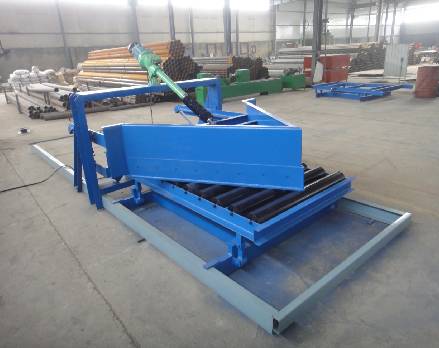 Afrikaans
Afrikaans  Albanian
Albanian  Amharic
Amharic  Arabic
Arabic  Armenian
Armenian  Azerbaijani
Azerbaijani  Basque
Basque  Belarusian
Belarusian  Bengali
Bengali  Bosnian
Bosnian  Bulgarian
Bulgarian  Catalan
Catalan  Cebuano
Cebuano  Corsican
Corsican  Croatian
Croatian  Czech
Czech  Danish
Danish  Dutch
Dutch  English
English  Esperanto
Esperanto  Estonian
Estonian  Finnish
Finnish  French
French  Frisian
Frisian  Galician
Galician  Georgian
Georgian  German
German  Greek
Greek  Gujarati
Gujarati  Haitian Creole
Haitian Creole  hausa
hausa  hawaiian
hawaiian  Hebrew
Hebrew  Hindi
Hindi  Miao
Miao  Hungarian
Hungarian  Icelandic
Icelandic  igbo
igbo  Indonesian
Indonesian  irish
irish  Italian
Italian  Japanese
Japanese  Javanese
Javanese  Kannada
Kannada  kazakh
kazakh  Khmer
Khmer  Rwandese
Rwandese  Korean
Korean  Kurdish
Kurdish  Kyrgyz
Kyrgyz  Lao
Lao  Latin
Latin  Latvian
Latvian  Lithuanian
Lithuanian  Luxembourgish
Luxembourgish  Macedonian
Macedonian  Malgashi
Malgashi  Malay
Malay  Malayalam
Malayalam  Maltese
Maltese  Maori
Maori  Marathi
Marathi  Mongolian
Mongolian  Myanmar
Myanmar  Nepali
Nepali  Norwegian
Norwegian  Norwegian
Norwegian  Occitan
Occitan  Pashto
Pashto  Persian
Persian  Polish
Polish  Portuguese
Portuguese  Punjabi
Punjabi  Romanian
Romanian  Russian
Russian  Samoan
Samoan  Scottish Gaelic
Scottish Gaelic  Serbian
Serbian  Sesotho
Sesotho  Shona
Shona  Sindhi
Sindhi  Sinhala
Sinhala  Slovak
Slovak  Slovenian
Slovenian  Somali
Somali  Spanish
Spanish  Sundanese
Sundanese  Swahili
Swahili  Swedish
Swedish  Tagalog
Tagalog  Tajik
Tajik  Tamil
Tamil  Tatar
Tatar  Telugu
Telugu  Thai
Thai  Turkish
Turkish  Turkmen
Turkmen  Ukrainian
Ukrainian  Urdu
Urdu  Uighur
Uighur  Uzbek
Uzbek  Vietnamese
Vietnamese  Welsh
Welsh  Bantu
Bantu  Yiddish
Yiddish  Yoruba
Yoruba  Zulu
Zulu Design and Functionality of Idlers for Efficient Conveyor Belt Systems in Material Handling Applications
The Importance of Idlers in Conveyor Belt Systems
Conveyor belts are an integral part of modern industries, facilitating the efficient movement of materials across various operations. One of the crucial components that ensure the smooth functioning of conveyor belts is the idler. Idlers are the rollers that support the belt and play a significant role in the performance, maintenance, and longevity of conveyor systems.
The Importance of Idlers in Conveyor Belt Systems
Idlers are typically designed to handle the load conveyed by the belt, ensuring that the weight is distributed evenly across the system. This helps to reduce wear and tear on both the belt and the idler itself. Different types of idlers are used depending on the specific application, including trough idlers for bulk material handling, impact idlers to cushion heavy loads during loading, and return idlers to support the belt on its return path. Choosing the right type of idler is crucial for maximizing the efficiency and effectiveness of a conveyor system.
idler for conveyor belt

The design of idlers also plays an important role in reducing operating costs. High-quality idlers can minimize friction as the belt moves, which not only increases the efficiency of the system but also reduces the energy consumption associated with operating the conveyor. This aspect is particularly vital in industries where energy costs are significant, as any reduction in energy consumption can lead to substantial savings over time.
Another important factor is maintenance. Idlers can wear out over time due to exposure to abrasive materials and heavy loads. Regular inspection and timely replacement of worn idlers can prevent unexpected breakdowns and costly repairs. Employing proactive maintenance strategies, such as monitoring the condition of idlers and planning for their replacement, can enhance the overall reliability and performance of the conveyor system. This not only minimizes downtime but also extends the life of the conveyor components, contributing to improved operational efficiency.
Moreover, idlers contribute to the safety of conveyor belt systems. A well-maintained idler system helps in stabilizing the belt, reducing the risk of spillage or accidents caused by misalignment. This is especially critical in industrial environments where heavy materials are being transported, as any failure in the conveyor system can pose significant safety hazards to personnel working nearby.
In conclusion, idlers are a vital component of conveyor belt systems, playing a multifaceted role that impacts not only the efficiency and effectiveness of material handling but also the safety and maintenance of the entire system. As industries continue to evolve and seek higher efficiency and lower operational costs, the importance of selecting high-quality idlers and maintaining them properly cannot be overstated. Investing in robust idler systems not only enhances the performance of conveyor belts but also supports the sustainability of industrial operations in the long term. The choice of idlers, therefore, is pivotal in ensuring that conveyor systems remain reliable, safe, and efficient in the ever-demanding landscape of modern industry.
-
Revolutionizing Conveyor Reliability with Advanced Rubber Lagging PulleysNewsJul.22,2025
-
Powering Precision and Durability with Expert Manufacturers of Conveyor ComponentsNewsJul.22,2025
-
Optimizing Conveyor Systems with Advanced Conveyor AccessoriesNewsJul.22,2025
-
Maximize Conveyor Efficiency with Quality Conveyor Idler PulleysNewsJul.22,2025
-
Future-Proof Your Conveyor System with High-Performance Polyurethane RollerNewsJul.22,2025
-
Driving Efficiency Forward with Quality Idlers and RollersNewsJul.22,2025





























